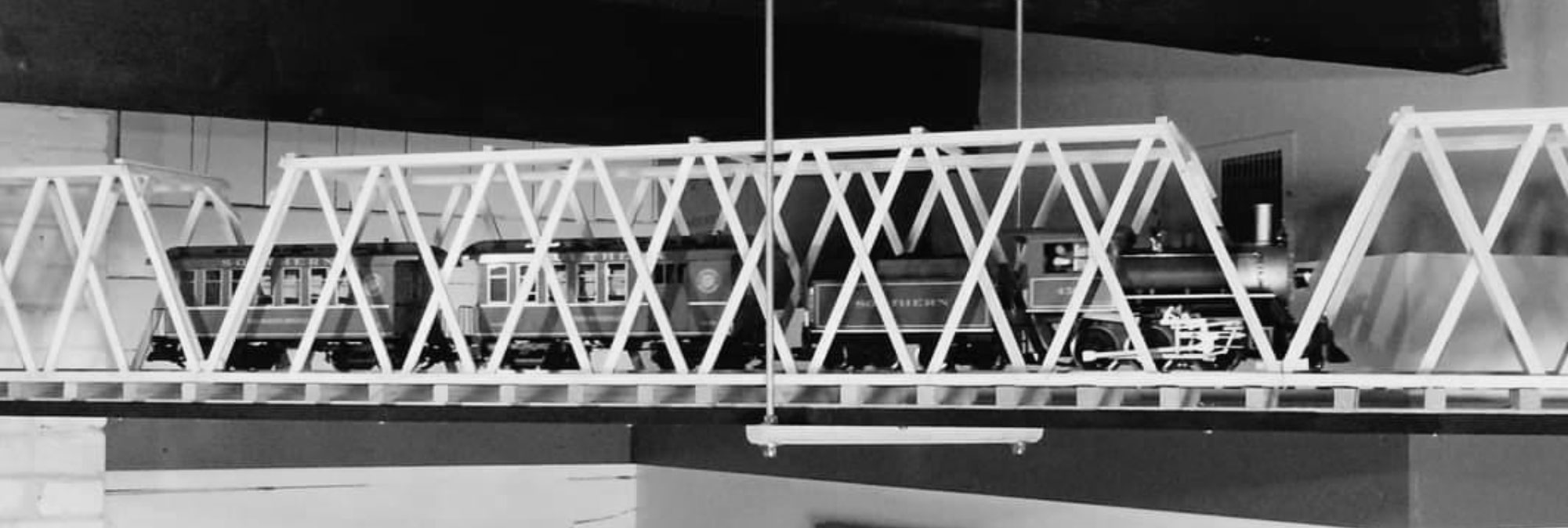
Depot Interior Tour
ROOM 1 (Southeast Corner of Depot - Entry)
(Original Waiting Room)
The pioneering South Carolina Canal and Railroad Company, Southern’s earliest predecessor, and one of the first railroads in the United States, was chartered in December 1827 and ran the nation’s first regularly scheduled steam-powered passenger train – the wood-burning Best Friend of Charleston – over a six-mile section out of Charleston, S.C., on December 25, 1830.
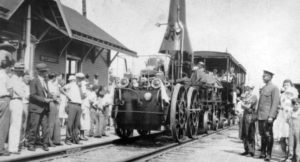
Visit of Best Friend of Charleston to Germantown in 1927 on its 100th Anniversary Tour
By 1857, the Memphis and Charleston Railroad was completed to link Charleston, S.C., and Memphis, but rail expansion was halted with the start of the Civil War. This only East-West rail link across the Confederacy played a large part in the Battle of Shiloh, the Siege of Corinth, and the 2nd Battle of Corinth.
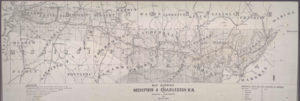
Map of Memphis and Charleston Railroad Route
Southern Railway came into existence in 1894 through the combination of nearly 150 lines that were combined, reorganized, and recombined beginning in the 1830s, formally becoming the Southern Railway in 1894.
The Southern Railway was a US Class 1 Railroad that was based in the Southern United States. Class 1 railroads had annual operating revenue of at least $1 million (raised to $3m in 1956). It was replaced by the Norfolk Southern Corporation along with its rival the Norfolk and Western Railway (caboose at Oaklawn Gardens on Poplar Pike), in 1982. The Southern Railway was renamed Norfolk Southern Railway in 1990 and has continued under that name ever since. Seven years later in 1997, the railroad now under the name “Norfolk Southern Railway”, absorbed the Norfolk and Western Railway ending the Norfolk and Western’s existence. North and Western continued to exist as a subsidiary until 1997).
FILM: HISTORY OF MEMPHIS & CHARLESTON RAILROAD
BELOW MONITOR THERE IS A LIST OF THE 3 RAILWAYS AND THEIR DATE OF EXISTENCE
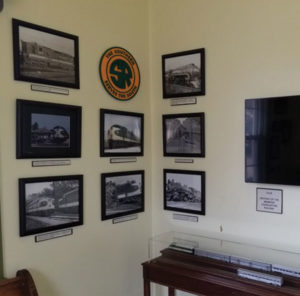
Art Work of Harry Cloyes
A longtime citizen, the late Harry Cloyes, was a local folk artist who painted Germantown scenes. The “News Boy” was the train that brought the Commercial Appeal to Germantown each day.
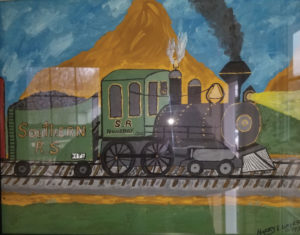
Written in the Commercial Appeal, August 18, 1900
Advertised as the fastest train that runs into Memphis on any road, the Southern Newsboy brings the Memphis Appeal to Germantown every day at 1:34 p.m. This news carrier leaves Florence, Alabama at 9:00 a.m. and arrives in Memphis at 2:00 p.m.
ROOM 2 (Northeast Corner of Depot – ADA 1 Entry)
(Original Waiting Room)
Germantown Depots – 1947/1948.
Photos
Pre-1947 Depot Structure (fire in ’47)
Post-1947 Depot Structure
President Harry Truman (US President in 1948)
Railway Express Agency
(REA) History and Bag/Sign – The service used up to the time of FedEx and UPS for moving freight. The local office was stationed at the Depot
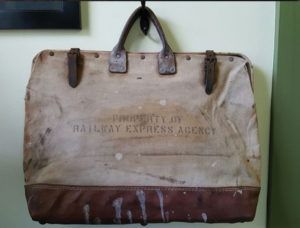
Ticket Window
Purchase of tickets and making arrangements for shipping.
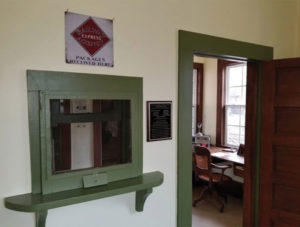
Germantown Depot Memories
ROOM 3 (Central Room)
(Original Operations Room)
The Cone-Shaped Fire Sand Bucket
The Germantown Depot has a potbelly stove in the central area of operations, keeping both the Depot Agent and his or her assistant warm on cold days. This early 20th century American industrial, conical-shaped, galvanized steel hanging “fire” sand bucket served as a simplistic fire suppression device and was originally suspended from a hook in the vicinity of a potbelly wood or coal stove.
Small fires could be effectively extinguished when the sand in the bucket was dumped on the fire to starve it of the oxygen it needs to stay alight. This method of fighting liquid fires has generally been replaced by modern foaming agents. The sand from a fire bucket could also be used to absorb spills of flammable liquids and render them less dangerous, by reducing the risk of ignition and explosion.
The pointed end of the bucket reduced the risk of theft since it could not stand up and contain the contents.
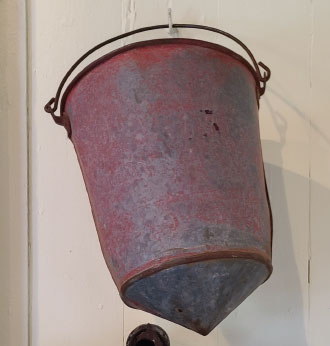
Ticket Window
Purchase of tickets and making arrangements for shipping.
List of Depot Agents and Photo of Agent Thelma Brooks.
Scanner – Live chatter on rails.
Telephone at Depot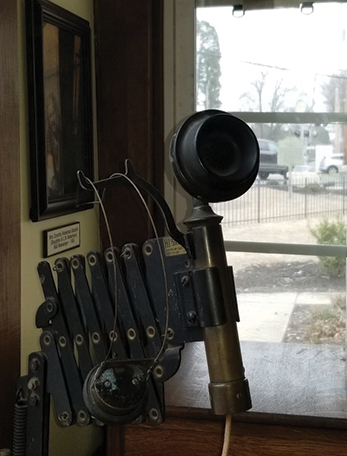
Agent’s Desk at North Window
Bookkeeper’s Desk at South Window
Stove to warm Depot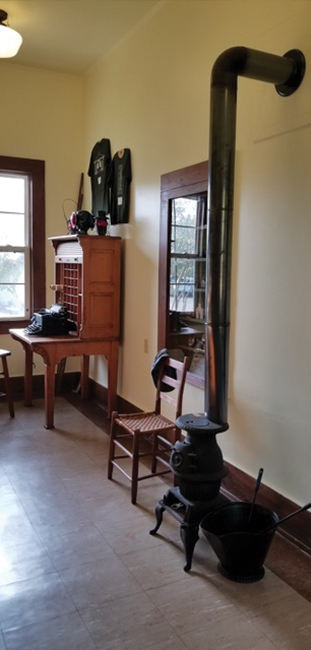
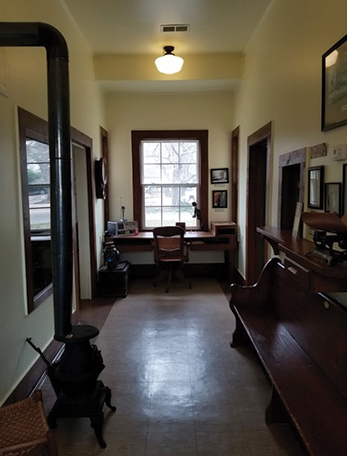
Sales – T-Shirts, Notecards
ROOM 4 (Baggage Room)
(Original Baggage Room)
Garden Scale Train on Overhead Track
Early 20th Century Southern Railway cars.
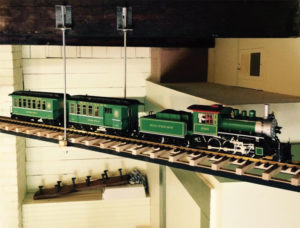
Bale of Cotton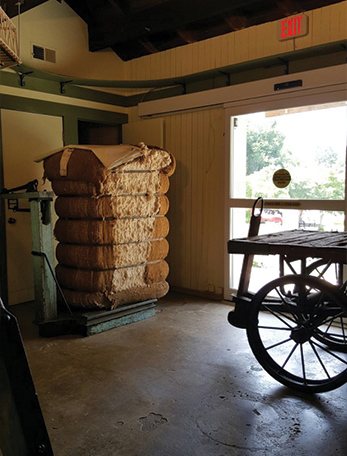
Rural Express Agency Cart
Variety of Train Equipment (e.g. rail wrench and other tools)
Period Baggage
Ceiling made of timbers from the original structure
Mike Fleming, working with the downtown Transportation Museum in Central Station, visited the Depot and brought to our attention the ceiling in the baggage room, composed of wood siding found on the exterior of boxcars. The planking also has letters, numbers, and markings typical to boxcar siding. Some planks have more than one letter and many were stenciled.

View of Train Approaching from West
Further questions contact: Andrew Pouncey, City Historian
